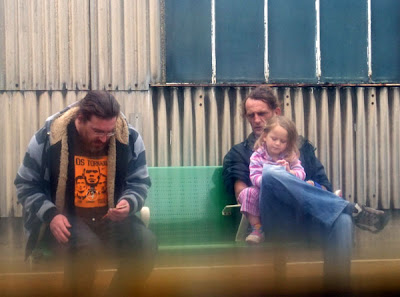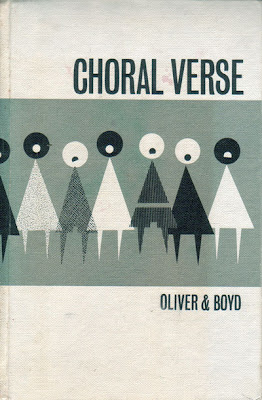I have just returned from a slightly odd five-day trip to the Isle of Wight, house-sitting for a complete stranger that my wife had met through Mumsnet.
My oldest son didn't want to go. After years of being warned about the dangers of chatting to strangers online, he was convinced that we were being lured to our deaths by a Belgian psychopath. It was only when I casually mentioned that the house had a Wii and Xbox that he began to change his tune.
The last time I went to the Isle of Wight I was six months old. Several people commented that very little had changed since my last visit. Of course this isn't true, but the four miles of water that separates the Island (as the locals refer to it) from the English mainland does give the place a very separate identity, almost as if it inhabits an alternate reality.
It's not quite Britain in the 1950s, but it doesn't feel like the 21st century either.
Here are a few things I loved about the Isle of Wight:
1. The walk to the Needles Old Battery:

It's almost a mile from the car park to the Victorian coastal defence at the southwestern tip of the island - not a huge distance, but enough to deter the
hoi polloi from ruining the tranquil atmosphere.
2. The Isle of Wight Railway:

Where else would you find a 1938 tube train in the middle of the English countryside? This isn't a 'heritage' line for tourists, but a genuine passenger service, using reconditioned London Underground rolling stock.
The journey from Ryde begins in a long tunnel and for a minute, listening to the the familiar clunks and whirs of the electric motors, it feels as if you're on the District Line approaching Sloane Square. When the train emerges into the English countryside, the juxtaposition of such unlikely elements feels like a very strange dream:

London Underground stations look nothing like this.
Or this:

3. Red Squirrels:

You can't see them, but they can see you. Unlike their big, brash American cousins, who now dominate the mainland, the native British squirrel is petite and discreet. I had to wait patiently in some dense undergrowth before I was rewarded with my David Attenborough moment: a red squirrel (tiny little thing) resting on a branch, making a series of strange squeals and clicks.
The next day I nearly ran one over.
I expect the BNP like the Isle of Wight. It's almost entirely white working class (I struggled in vain to find my favourite brand of balsamic vinegar), with very few of those annoying, Guardian-reading London types like me who push the property prices up with their art galleries and organic cafes. Even the squirrels are thoroughly British.
4. The Roman Villa in Newport:

Actually it's quite boring and I feel sorry for anyone who has got excited by the brown sign announcing a 'Roman Villa', only to find themselves looking at a floor. It's a very nice floor, with lots of impressive mosaics, but it's not a villa. I'm sure that people have been prosecuted for less misleading descriptions.
However, what I liked about the Roman villa in Newport is its incongruous location, situated in a dull-looking bungalow in a quiet residential road, a few doors down from the house we were staying in. Apparently the villa strays into next door's garden, but the previous owners didn't want to ruin their patio and it remains buried to this day.
5. Osborne House

This was Queen Victoria's favourite residence because it provided a sanctuary from a world in which she was routinely "mobbed by crowds", enabling her to enjoy a relatively normal life with her husband and children.
The coast of mainland England is visible from the gardens, but reassuringly distant:

The interior of the house wasn't my cup of tea: hideously opulent furnishings and
objets d'art, complemented with badly-lit, poorly-executed oil paintings by forgotten masters. It didn't help that I kept bumping into an annoying mother and daughter, who made loud, confident pronouncements like
"They didn't have magazines in the Victorian times." The daughter was probably ten years younger than me, but every time we reached a staircase she wheezed and complained with each step. Instead of advising her daughter to eat fewer doughnuts, the mother agreed.
I had almost given up hope of seeing anything I liked, but Queen Victoria's bedroom more than made up for the disappointment of the rest of the house. To see the bed where Victoria died and look up at the ceiling decorations that she must have stared at countles times was very moving. I tried to imagine the scene - only 110 years ago - in which the dying Queen was attended to by her servants, physician and loved ones, but just as I started to lose myself, the mother and daughter appeared:
"Oh yes, she was a very respectful lady..."Fortunately they didn't stay long. But as they left, two attendants decided to begin a detailed comversation about their dogs' health and the resulting vet bills. I gave up.
One other thing I liked about Osborne House was the gallery devoted to Indian nobles. It looked as if Queen Victoria took her role as Empress of India very seriously, devoting several rooms to portraits of maharajas and artifacts from the subcontinent.
I had no idea that Victoria went to great pains to learn Urdu and a display case showed a page from an exercise book in which she had written several passages in the local script. Perhaps the recent memory of the Indian Mutiny had prompted a more respectful attitude on the part of the British.
But even if you don't like vulgar, excessively ornate 19th century interiors, Osborne House is worth visiting for the beauty of its grounds. The formal gardens had an idyllic, arcadian quality; like a ruined Greek temple:

However, at the edge of the grounds through a gap in the trees, I caught a glimpse of my true arcadia:

6. Carisbrooke Castle:

There isn't much to say about Carisbrooke Castle; it's just a beautiful place with a wonderful panorama of the surrounding countryside. Charles I was held prisoner here after Parliament had won the English Civil War and although it can't have been a terribly happy time for him, at least he had a room with a view:

After exploring the grounds, I went to the tea shop and ordered a cup of tea and a slice of cake (it's a rock n'roll life). Instead, I got a pot of tea and a huge wedge of Victoria sponge. No wonder there's an obesity crisis.
I've noticed that portions have doubled in size over the last 20 years, with a standard packet of crisps going from 20g to 40g. I can understand why this has happened: a manufacturer who sells a 15p slice of cake for £1.70 can now sell a 30p wedge of Victoria sponge for £3.40, making almost £2 additional profit for doubling the portion.
But the end result is that I'm stuck on a staircase behind a 30 year-old woman who is wheezing like a consumptive war veteran. It's not good.
In the tea shop, I was joined by a couple who spoke in a loud nasal accent about how "taahribly entrahsted" they were in the Castle's past:
"In Tennesse we met a chap who claimed that he was descended from one of the signatories of Charle's I's death warrant. He seemed convinced that because of this he wouldn't be allowed into England and nothing we said could change his mind..."There was a pause.
"Still, perhaps he wouldn't be let in for other reasons! Hwah, hwah, hwah!"I was happy in Carisbrooke Castle, but all my sons wanted to do was go back to the house and continue playing with the Wii. My youngest son complained that
"you're taking us out all the time. This is the worst day of my life since the start of the world." It was very frustrating to realise that all my sons wanted to do was stay in and play computer games. I'd vaguely entertained the idea of buying a Wii - I'd fallen for the marketing spiel about getting families to play together, but it's bollocks. All of these games suck the imagination dry, replacing original thought with predetermined scenarios and ghastly soundtracks that repeat the same leitmotifs,
ad nauseum.
Worst of all, I was also becoming addicted to the Wii. When, on the last morning, I realised that I was the first person to wake up, I crept downstairs to see if I could beat the high score in Wii Sports. I'd developed a genuine dislike of a character called Martin, who kept stopping me get to the next level. I had a score to settle with him:

But I haven't completely lost hope. I'd say that the moment when we were all at our happiest was on a summer's evening, walking along the cliff tops to the Old Needles Battery. Away from the distractions of the Wii and the temptations of 'family' theme parks (our one vist to a theme park lasted for a mere 15 minutes, as a girl vomitted in front of us within 10 seconds of arriving and my son got stung by a bee), we managed to find our 'mojo'.
Sometimes the best things in life are free.
 This photo doesn't do justice to the beauty of this house. The great-aunt's son - an antiques restorer and dealer - has filled the house with beautiful objects and said that he tries to lead a plastic-free existence.
This photo doesn't do justice to the beauty of this house. The great-aunt's son - an antiques restorer and dealer - has filled the house with beautiful objects and said that he tries to lead a plastic-free existence.

























































